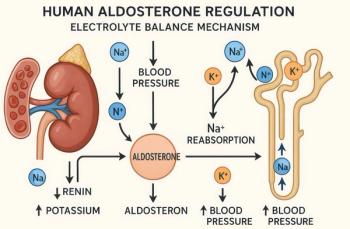
Atrial Fibrillation: Patient Visit Checklist
Reassess rate vs rhythym control, appropriate anticoagulation therapy and potential drug-drug interactions.
As the epidemic of people with atrial fibrillation (AF) increases and the population conintues to age, the burden of managing AF often rests on the shoulders of the primary care provider. At its most fundamental level, AF management consists of symptom control, preventing the thromboembolic complications of the condition within the context of other cardiac and noncardiac comorbidities.
At each follow-up visit with these patients, therefore, it is important to ask the following 3 questions under AF on your “problem list.”
1. Rate vs Rhythm Control?
Although the widely accepted practice has become lenient rate control in permanent AF (based on the results of the AFFIRM1 and RACE-22 trials), this question ought to be readdressed for every patient at every visit. It is not uncommon, for example, for an elderly patient who has permanent AF (rate controlled) to have other cardiovascular morbidities, such as coronary artery disease. If this patient were to have an acute coronary syndrome with a precipitous drop in left ventricular ejection fraction (LVEF), the atrial kick could become more important than before and a strategy of rhythm control (either with anti-arrhythmic medications or ablation) may suddenly become preferable. (As an aside, a randomized controlled trial of routine rhythm control in patients with LVEF <35% and AF did not improve outcomes over rate control.3
As another example, a young, otherwise healthy patient who is unable to tolerate rate control medications, prefers not to take medications, or is highly symptomatic despite adequate pharmacologic rate control may be an optimal candidate for rhythm control with ablation performed by an electrophysiologist. Therefore, at every visit, it is important to also assess the success of the chosen management strategy. If necessary, medication adjustment (ie, uptitration of beta-blockers) should be done.
2. To Anticoagulate or Not?
With the adoption of multiple risk scores for thromboembolic events, as well as
Importantly, on occasion, a patient who was previously appropriate for anticoagulation may now no longer be a good candidate as a result of life-threatening or hemodynamically significant bleeding. Therefore, the occurrence of any bleeding events should be reviewed at every visit.
3. Are the Other Medications Still Appropriate?
Finally, when evaluating an AF patient in the office setting it is critical to review the concomitant medication lists for “red flags.” For example, if a patient is on “triple therapy” with aspirin, an antiplatelet agent (clopidogrel, prasugrel, ticagrelor) and an anticoagulant, it may be appropriate to determine if their thromboembolic risk outweighs their bleeding risk (question #2) and whether either anticoagulation or antiplatelet therapy can be re-evaluated. Alternatively, a proton pump inhibitor may be indicated due to this medical regimen.
Therefore, reviewing the AF medication list and assessing: (1) appropriateness of AF medication with others on board and (2) the potential for drug-drug interactions among AF medications is a vital part of managing every AF patient.
References:
1. Wyse DG, Waldo AL, DiMarco JP, et al, for the Atrial Fibrillation Follow-up Investigation of Rhythm Management (AFFIRM) Investigators. A comparison of rate control and rhythm control in patients with atrial fibrillation. N Engl J Med. 2002;347:1825. (
2. van Gelder IC, Groenveld HF, Crijns HJ, et al. Lenient versus strict rate control in patients with atrial fibrillation. N Engl J Med. 2010; doi:10.1056/NEJMoa1001337. (
3. Roy D, Talajic M, Nattel S, et al, for the Atrial Fibrillation and Congestive Heart Failure Investigators. Rhythm control versus rate control for atrial fibrillation and heart failure. N Engl J Med 2008;358:2667-2677. June 19, 2008. doi:10.1056/NEJMoa0708789 (
Newsletter
Enhance your clinical practice with the Patient Care newsletter, offering the latest evidence-based guidelines, diagnostic insights, and treatment strategies for primary care physicians.





















































































































































































































































































